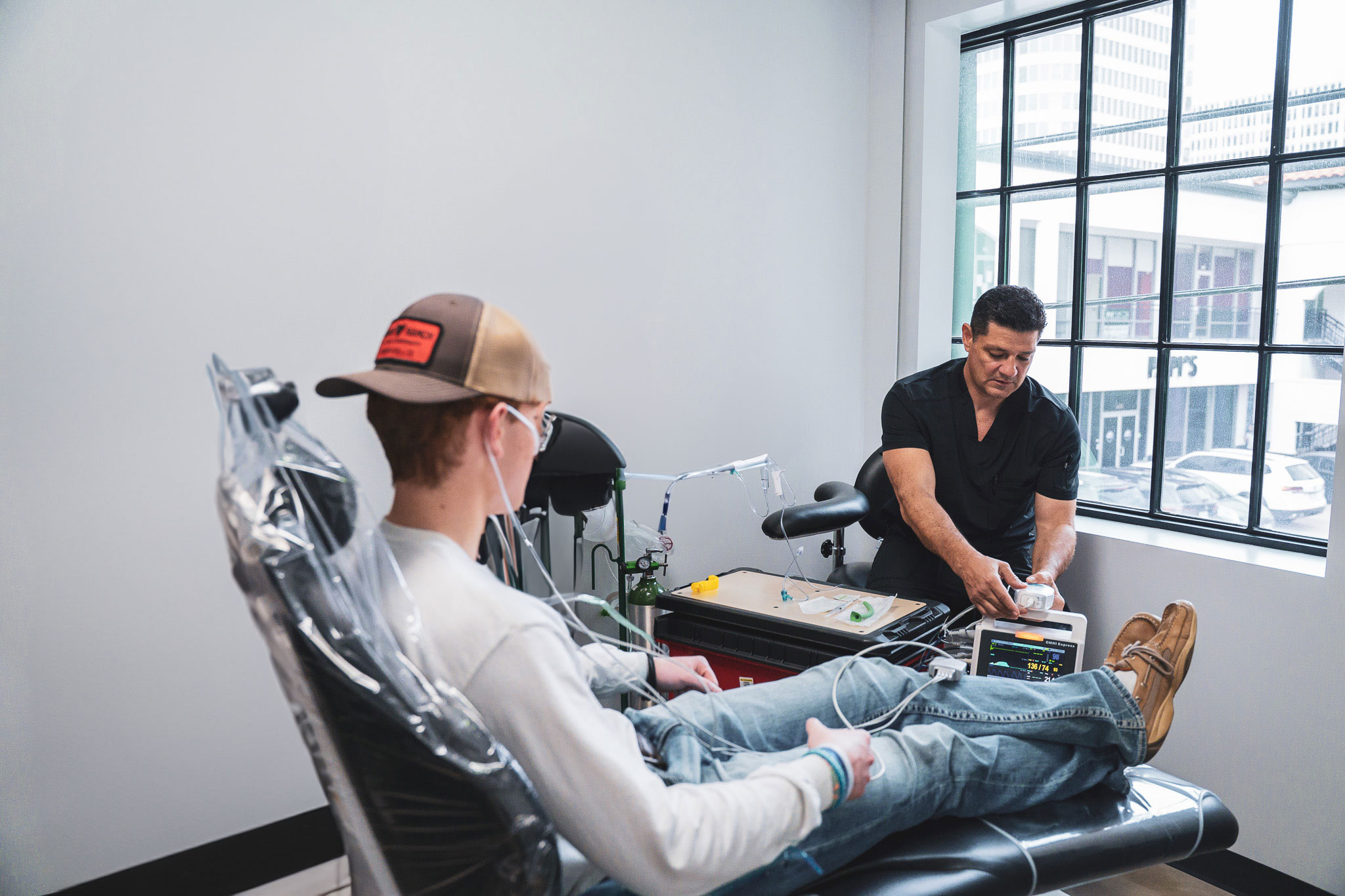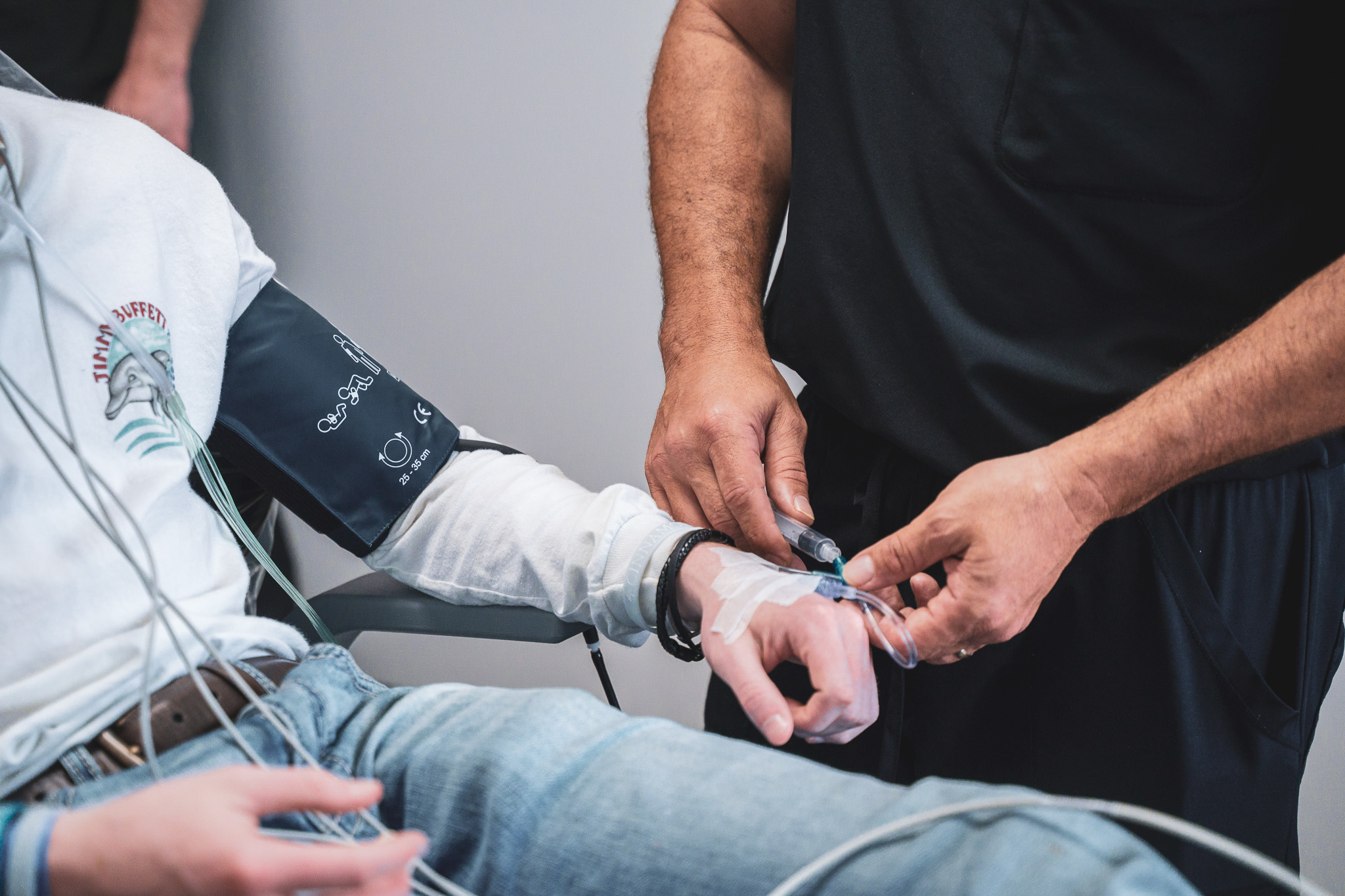As a medical or dental professional, you understand the importance of making patients feel comfortable during procedures. For many individuals, the thought of undergoing dental work or medical procedures can be overwhelming, leading to anxiety and fear. To address these concerns and make patients more comfortable, dental sedation has become increasingly popular. Sedation dentistry provides a range of benefits for patients, including relaxation, reduced pain, and a more comfortable overall experience.


As a medical or dental professional, you understand the importance of making patients feel comfortable during procedures. For many individuals, the thought of undergoing dental work or medical procedures can be overwhelming, leading to anxiety and fear. To address these concerns and make patients more comfortable, dental sedation has become increasingly popular. Sedation dentistry provides a range of benefits for patients, including relaxation, reduced pain, and a more comfortable overall experience.
Dental sedation is available in various forms, including oral sedation, nitrous oxide, and intravenous (IV) sedation. Each of these forms of dental sedation provides different levels of sedation that can help to alleviate patient dental anxiety and discomfort during dental treatments.
Oral
Sedation
Oral sedation involves the use of oral sedative medications that are taken orally. This medication induces a state of relaxation that can help patients feel more comfortable during procedures. This type of sedation can benefit patients who experience dental anxiety. Oral sedation can be mild to moderate, depending on the dosage and the patient’s needs.
Nitrous Oxide
Sedation
Nitrous oxide sedation, also known as “laughing gas,” is a mild form of sedation that involves the inhalation of nitrous oxide gas. This gas relaxes patients and reduces dental anxiety during procedures. Nitrous oxide sedation is administered via a mask that is placed over the nose. Nitrous oxide provides minimal sedation.
Intravenous (IV)
Sedation
IV sedation is the most potent form of dental sedation, and it is administered directly into the patient’s bloodstream via an IV. IV sedation provides a deeper level of sedation than oral sedation or nitrous oxide, making it an ideal option for patients who require extensive dental work or those who experience significant anxiety or discomfort during dentistry.
Sleep
Dentistry
Sleep dentistry refers to the use of general anesthesia during dental treatments to put the patient to sleep. Sleep dentistry or general anesthesia involves delivering sedative medications to put the patient into deep sedation. Sleep dentistry and general anesthesia are only reserved for serious dental surgeries, such as maxillofacial surgery.

Dental sedation can benefit a wide range of dental procedures, from simple cleanings to more complex oral surgeries. Some of the dental procedures that may benefit from sedation include:
- Wisdom Tooth Extraction: Wisdom tooth extraction is a common dental procedure that can be uncomfortable and painful. Dental sedation can reduce anxiety and discomfort.
- Root Canal Treatment: Root canal treatment is a dental procedure that can be lengthy and painful. Sedation can help patients relax and tolerate the procedure more easily.
- Dental Implants: Dental implant placement involves a surgical procedure that can be uncomfortable and anxiety-provoking. Sedation can help patients feel more at ease.
- Gum Disease Treatment: Gum disease treatment involves scaling and root planing, which can be uncomfortable and painful. Dental sedation can reduce pain and discomfort.
- Multiple Procedures: Patients who require multiple procedures may benefit from dental sedation to reduce anxiety and discomfort during the process.

Dental sedation can benefit a wide range of dental procedures, from simple cleanings to more complex oral surgeries. Some of the dental procedures that may benefit from sedation include:
- Wisdom Tooth Extraction: Wisdom tooth extraction is a common dental procedure that can be uncomfortable and painful. Dental sedation can reduce anxiety and discomfort.
- Root Canal Treatment: Root canal treatment is a dental procedure that can be lengthy and painful. Sedation can help patients relax and tolerate the procedure more easily.
- Dental Implants: Dental implant placement involves a surgical procedure that can be uncomfortable and anxiety-provoking. Sedation can help patients feel more at ease.
- Gum Disease Treatment: Gum disease treatment involves scaling and root planing, which can be uncomfortable and painful. Dental sedation can reduce pain and discomfort.
- Multiple Procedures: Patients who require multiple procedures may benefit from dental sedation to reduce anxiety and discomfort during the process.
The benefits of sedation dentistry are numerous and can help patients feel more comfortable and relaxed during dental treatments. Some of the benefits of sedation dentistry include:
- Reduced Anxiety: Sedation dentistry can help to alleviate anxiety and fear associated with dental treatments. By providing patients with a relaxed state, dental sedation can help them feel more comfortable and less fearful.
- Reduced Pain: Dental treatments can be painful, especially those that involve extensive work or surgical procedures. Sedation dentistry can help to reduce pain by inducing a state of relaxation that can help patients tolerate the pain more easily.
- Increased Comfort: Sedation dentistry can provide increased comfort during dental procedures by allowing patients to relax and feel more at ease. This increased comfort can help patients to feel more confident about undergoing dental work.


The benefits of sedation dentistry are numerous and can help patients feel more comfortable and relaxed during dental treatments. Some of the benefits of sedation dentistry include:
- Reduced Anxiety: Sedation dentistry can help to alleviate anxiety and fear associated with dental treatments. By providing patients with a relaxed state, dental sedation can help them feel more comfortable and less fearful.
- Reduced Pain: Dental treatments can be painful, especially those that involve extensive work or surgical procedures. Sedation dentistry can help to reduce pain by inducing a state of relaxation that can help patients tolerate the pain more easily.
- Increased Comfort: Sedation dentistry can provide increased comfort during dental procedures by allowing patients to relax and feel more at ease. This increased comfort can help patients to feel more confident about undergoing dental work.
While dental sedation is generally safe, there are some precautions that need to be taken to ensure patient safety. Some of the precautions with sedation dentistry that need to be taken include:
Proper Patient Selection

Proper patient selection is crucial when it comes to IV sedation dentistry. Dental professionals need to perform a thorough medical history review and evaluation of the patient’s current health status before administering sedation. The evaluation should include a review of the patient’s current medications, medical conditions, allergies, and any previous adverse reactions to sedatives or anesthesia. This assessment helps to determine the appropriate level and type of sedation that will be safe for the patient.
Patients with a history of heart disease, respiratory disorders, or other chronic medical conditions may require additional monitoring during sedation. Also, pregnant women and individuals with a history of substance abuse may not be suitable candidates for sedation.
Proper Equipment

The equipment used during emergency sedation dentistry must be up-to-date and properly maintained to ensure the safety of the patient. This includes having the necessary equipment to monitor the patient’s vital signs and administer emergency medications if needed. The sedation dentist must use the latest equipment and technologies.
The dental office and sedation dentist should have equipment that is specifically designed for dental sedation, such as pulse oximeters, blood pressure monitors, and emergency medications, including reversal agents. Additionally, the dental professional administering the sedation should be trained in the use of this equipment and emergency procedures, including Basic Life Support (BLS) and Advanced Cardiovascular Life Support (ACLS).
Proper Monitoring

During sedation dentistry, patients must be monitored closely to ensure their safety. Monitoring should include the patient’s vital signs, such as blood pressure, heart rate, and oxygen levels, to ensure that the sedation is not causing any adverse effects. Dental professionals should also monitor the patient’s level of consciousness and response to stimuli.
Intravenous sedation requires that sedation dentists continuously monitor the patient’s airway and breathing and the level of sedation to ensure the patient is not under- or over-sedated. The sedation dentist should also be prepared to respond to any complications that may arise during the procedure, such as respiratory distress, hypotension, or cardiac arrest.
Dental sedation is a safe and effective way to help patients feel more comfortable and relaxed during dental procedures. With the availability of various types of dental sedation, dental professionals can tailor the sedation to meet the needs of each patient.
At Level Up Anesthesia, we understand the importance of providing safe and effective dental sedation services. Our team of experienced physicians, sedation dentists, and CRNAs provides on-site office-based turnkey sedation and anesthesia solutions for medical and dental offices. We use up-to-date technology and advanced techniques to ensure the safety of our patients during procedures. Please contact us to explore our dental sedation services in Houston.
